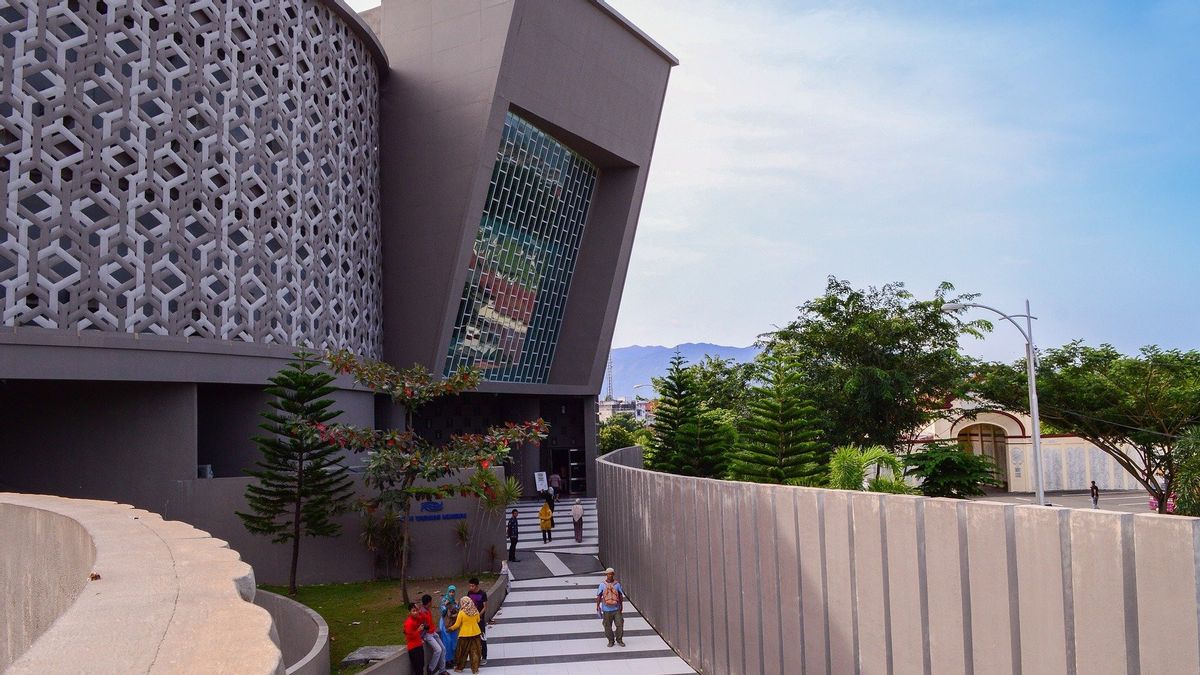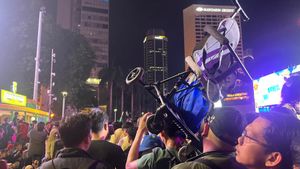JAKARTA - Exactly today, December 26, 15 years ago, an earthquake and tsunami struck Serambi Mekah, Aceh. The tsunami occurred after an earthquake measuring 8.7 on the Richter Scale (SR) occurred in the Indian Ocean region. The waves swept across the tip of the island of Sumatra, and Aceh was the worst part.
The tsunami was a national disaster and claimed the lives of approximately 170,000 people. Meanwhile, hundreds of thousands of houses, buildings and public facilities were destroyed.
The earthquake occurred in about 10 minutes. Its power generates the propagation of tsunami waves reaching 800 kilometers per hour in deep and free oceans. The earthquake not only affected Aceh but also 13 other countries such as the Andaman Islands, Thailand, India, Sri Lanka, and parts of Africa.
As explained by LIPI Geotechnology Researchers Danny Hilman Natawidjaja and Mudrickh Daryono in the Pidie Jaya Earthquake Study of the Provinces of Aceh Indonesia (2016), Aceh and Sumatra, there are two main sources of earthquakes, namely the megathrust zone under the waters of western Sumatra and the Sumatra Great Fault route.
The megathrust zone is the boundary between the plates in the subduction zone, namely the Indian Ocean Plate, which lies beneath the Sumatra Plate. Meanwhile, the Sumatra Great Fault route is a route that divides the Bukit Barisan mountains, starting from the Aceh region to the Sunda Strait.
A fault or fault is a fracture area or zone in the earth's crust, the two sides of which are held together by pressure and frictional forces on its surface. The two blocks on the side of the fault continue to move slowly due to tectonic forces.
The pressure on this plane will continue to increase until it finally accumulates beyond its locking force so that the fault plane breaks and moves suddenly releasing all the pressure. This sudden movement causes a shock wave which then spreads in all directions and shakes the earth around it which is called an earthquake.
Earthquake Resistant Buildings in Aceh
Due to these conditions, the Government created a disaster mitigation program, one of which was making earthquake-resistant buildings, Simple Healthy Instant Homes (RISHA). RISHA, as explained by the Ministry of Public Works and Public Housing (PUPR) on its official website, is an affordable and livable home technology that uses an earthquake-resistant knock-down system. Each module has three types of components which are flexible and efficient in the construction of building materials.
After the 2004 Aceh tsunami, the RISHA concept has been implemented by as many as 10 thousand units in Nanggroe Aceh Darusalam. In addition, RISHA has now been established in more than 60 regions in Indonesia.
Apart from RISHA, in Aceh there is also an earthquake-resistant building specifically intended for when a tsunami disaster occurs. The name is the escape building.
The building existed 10 years after the tsunami in Aceh. According to the Head of the Tsunami and Disaster Mitigation Research Center (TDMRC) Syiah Kuala University (Unsyiah), as reported by tempo.co, the building can withstand earthquakes reaching 10 on the Richter scale. In addition, the design also follows the tsunami waves 15 years ago.
In Meuraxa Subdistrict, which was devastated by the tsunami, four escape buildings were built as a shelter in the event of another tsunami. Respectively located in the villages of Lambung, Deah Glumpang, and Deah Teungoh. While another one is in Gampong Pie which functions as the TDMRC office. It is in this office that disaster seminars and other tsunami research are often held involving experts from various countries.
The building was funded by the Aceh-Nias Reconstruction and Rehabilitation Agency (BRR), with a budget of around Rp. 15 billion. The project was also assisted by the Japanese government through the Japan International Cooperation Agency (JICA). Apart from money, they also built the initial concept of the building.
Each escape building is built with an area of 1,400 square meters. The building is strong because it is supported by 54 pillars, each of which is 70 centimeters in diameter. The building is about 18 meters high with 4 floors. The floor is finally left open and there is a helipad available for helicopter landing.
For its capacity, the escape building is capable of evacuating as many as 500 people. The building is also equipped with equipment and facilities for evacuation.
Apart from escape buildings, there are other buildings that are resistant to earthquakes and tsunamis, namely the tsunami gunpowder located in the city of Banda Aceh. In addition, several government buildings that have recently been built are also earthquake resistant.
The English, Chinese, Japanese, Arabic, and French versions are automatically generated by the AI. So there may still be inaccuracies in translating, please always see Indonesian as our main language. (system supported by DigitalSiber.id)










